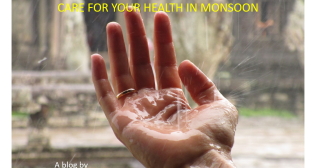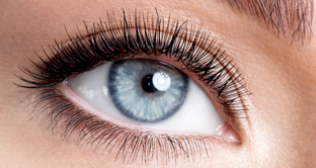Monsoons provide a sigh of relief from the scorching heat, but the chances of certain infections spreading also rise during this time. As many of us know, eye flu cases surge yearly during monsoon.
What exactly is Eye flu?
Term | Description |
Eye flu | - An eye infection or allergy that turns the eyes red, itchy, as well as watery.
- It can also lead to a sticky discharge as well as make one’s eyes feel less comfortable.
- It is contagious, which means this disease can transmit from one individual to another individual easily.
|
Conjunctivitis | - The medical term utilised for eye flu.
- The condition refers to the swelling or inflammation of the conjunctiva, the thin, transparent layer of tissue that lines the inner surface of the eyelid as well as covers the white portion of the eye.
|
Common Symptoms of Eye Flu | - This condition is characterized by red eyes, excessive tearing, itching, as well as a discharge that can be either watery or thick and yellowish.
- In few cases, it can cause flu-like manifestations such as a runny nose, sore throat, as well as general uneasiness.
|
Causes of Eye Flu
Cause | Description |
Viral Infection | - Eye flu is mostly caused by viruses such as adenoviruses, herpes simplex virus (HSV), enteroviruses, or other respiratory viruses.
- It can develop through exposure to the coughing or sneezing of an individual suffering from an upper respiratory tract infection.
- This condition can also happen as the virus spreads along the body's own mucous membranes, which join the lungs, throat, nose, tear ducts as well as conjunctiva.
|
Bacterial Infection | - It is less predominantly caused by bacteria like Staphylococcus aureus, Streptococcus pneumoniae, or Haemophilus influenzae.
- Insects, physical contact with other individuals, poor hygiene (touching the eye with unclean hands), or utilising contaminated eye makeup as well as facial lotions can also cause the infection.
|
Allergic Reactions | - Eye flu is generally triggered by exposure to allergens such as pollen, dust mites, pet dander, or certain chemicals.
- Individuals suffering from seasonal allergies develop it when they come across a substance that triggers an allergic reaction in their eyes.
- Allergic conjunctivitis may impact one or both eyes and generally occurs alongside other allergic symptoms such as sneezing as well as nasal congestion.
|
Exposure to Irritants | - Exposure to toxic substances or irritants such as chlorine, smoke, or household chemicals can cause chemical conjunctivitis.
|
Environmental factors | - Environmental factors like pollution, excessive pollen counts, dry air, and others can also cause eye flu outbreaks.
|
Close Contact | - Coming in direct contact with infected individuals, respiratory droplets, or contaminated surfaces also lead to eye flu.
|
Symptoms of Eye Flu
Some Common symptoms of eye flu comprise:
Symptom | Description |
Redness | - The eyes may appear pink or bloodshot due to the inflammation caused by the viral infection.
|
Foreign Body Sensation | - Feel something has entered in one’s eye.
|
Itching | - The impacted eyes may face continuous itching, leading to discomfort as well as rubbing.
|
Watering | - Too much watery discharge is a predominant symptom of this eye ailment.
|
Discharge | - The eyes may secrete a sticky, yellowish discharge, especially post waking up. Overnight, the crusts may form around the eyelids as the fluid dries and hardens. Individuals may have difficulty opening their eyes when they get up because of these crusts.
|
Lid Swelling | - There might be swelling in the upper eyelid as well as face as well.
|
Sensitivity to Light | - A few individuals may experience sensitivity to light, known as photophobia.
|
Blurred Vision | - In few cases, it can cause temporary blurred vision or a gritty sensation in the eyes.
|
Along with these symptoms, one might have sore throat, cough, pain in the head as well as at times fever too.
Home Remedies for Eye Flu
Remedy | How to use |
Warm Compress | - Put warm compresses over your eyes for a few minutes several times a day to help relieve irritation as well as loosen any crusts.
- Dip a clean cloth in warm water, wring out too much water, and gently put it on your eyes for relief.
|
Saline Solution | - To apply salt water for eye infection, mix a teaspoon of salt in a cup of warm water as well as utilise it to rinse your eyes smoothly.
- The saline solution can help cleanse as well as soothe the infected area.
|
Avoid Irritants | - Try to avoid smoke, dust as well as other sources that could aggravate symptoms
|
Cool Compress | - Regular utilisation of a cool compress can offer relief from swelling and soothe irritated eyes.
- Place a damp cloth soaked in cool water over the closed eyes for a few minutes. Repeat these certain times a day for comfort.
|
Rose Water Eye Drops | - Rose water is famous for its natural cooling as well as anti-inflammatory properties.
- Utilising rose water as eye drops can aid in reducing the manifestations of eye flu.
- One should make sure that the rose water an individual utilises is pure and free from any additives or chemicals.
|
Warm Compress: Soothing Relief
Eye flu is easily transmissible, which needs intervention, applying a warm compress is helpful in alleviating irritated eyes. To use warm compress, begin by soaking a clean cloth in warm water. Squeeze out the excess water so that although the cloth is damp but not dripping. Gently put the warm cloth over your closed eyelids for approximately 5 to 10 minutes of time interval. The warmth aids in increasing the flow of blood, decrease swelling, as well as loosen any crust. One must always utilise a clean cloth to avoid spreading infection.
Saline Solution: Gentle Eye Cleansing
Eye wiping with a saline solution can comfort your eyes. To prepare a saline solution, dissolve half a teaspoon of salt in one cup of distilled, boiled water. Make sure the water has become cold, as this is the preferred water temperature. Wash your hands and make sure that the dropper or the eye cup that will be used is also clean. The eye should either be rinsed by instilling a few drops or by using the solution to splash the eye. It could possibly help to clear discharge, decrease inflammation, and assist with keeping the eyes clean. For better results, utilise saline solution several times a day, but one must avoid sharing it to prevent spreading infection.
Avoiding Irritants: Practical tips
Easing situations that trigger eye flu is essential in minimizing the discomfort for faster recovery. This list consists of smoke, dust, and specific Odors like perfume which can aggravate the condition. To avoid these, make sure that your living environment is clean by occasionally cleaning the dust and using air purging machines. Do not expose yourself to smoke or be around chemicals or any scented products. Also avoid sources of allergic reactions, dust, and animal hair by avoiding opening windows during pollen season or using hypo allergenic materials on the bed. It is advised to clean one’s hands before touching the eyes and refrain from using other people’s towels. Managing your interactions with the irritants highlighted above will ensure you reduce the advancement and effect of eye flu, availing a better healing process.
Cool Compress
Cool compress may really help to ease eye flu (viral conjunctivitis) since it is able to alleviate the pain, inflammation as well as reddening of the eyes. For a cool compress, take a clean cloth and soak the cloth in cold water, ring it out and put the cloth over your closed eyes for some time like 5-10 min. Perform this several times a day as required. Ensure that the cloth is clean to avoid spreading the infection, in case both eyes are infected then ensure that the two different compresses are used. Do not apply ice directly to the skin because this may cause sensitivity or even injury to the skin.
Rose Water Eye Drops: Nature Cooling
Essentially, eye drops containing rose water can effectively treat eye flu – viral conjunctivitis – because of the rose water’s natural anti-inflammatory property. To use, make sure that there are no other ingredients added in the rose water other than water and the roses themselves. Rub your hands and with a novel dropper, be sure to put 1-2 drops of the rose water into each infected eye three times a day. Post that, wash your hands, gently close your eyes and stay a little motionless. To ensure hygiene do not touch the tip of the dropper to your eyes or hands.
When to Seek Medical Attention?
While most cases of eye flu can be managed at home, it is important to consult an eye specialist if eye flu treatment at home is not providing you relief or if you have:
Indicator | Action to take |
Severe pain | - If one is experiencing severe pain, it’s crucial to consult a healthcare professional to assess the cause as well as appropriate treatment. They can prescribe medicines/advice treatments on the basis of severity as well as type of conjunctivitis.
|
Vision changes | - It requires prompt medical evaluation. These symptoms could depict complications or a more severe condition beyond simple conjunctivitis.
|
Symptoms that worsen or continue for more than two weeks. | - Persistent or worsening symptoms might depict a more severe or complicated case of conjunctivitis, like bacterial infections that require antibiotics or other underlying conditions. A healthcare provider can do a thorough examination as well as offer an accurate diagnosis.
|
Signs of bacterial infection, such as thick yellow or green discharge. | - One should book an appointment with a healthcare professional immediately.
|
Have a weakened immune system. | - To assess one’s condition, one should book an appointment with healthcare professional immediately.
|
Eye doctors will conduct medical evaluations, provide personalized advice, and recommend appropriate eye flu treatment based on your condition.
Preventing Eye Flu (Conjunctivitis)
Prevention tip | Description |
Maintain Good Hygiene | - Practice frequent handwashing with soap as well as water, especially post touching any contaminated surfaces, eyes, mouth, as well as face. It helps prevent the spread of viral as well as bacterial infections that can cause eye flu.
|
Avoid Touching Your Eyes | - One should refrain from touching or rubbing one’s eyes with dirty hands to avoid introducing viruses or bacteria into one’s eyes as well as increasing the risk of infection.
|
Keep Away from Polluted Water | - Avoid interaction with polluted water, as it may comprise harmful bacteria as well as viruses.
|
Use Protective Eyewear | - When outdoors, especially during high pollen seasons, put protective eyewear or sunglasses to shield your eyes from allergens as well as airborne irritants.
|
Keep Home Clean | - Regularly clean and dust your home to decrease indoor allergens such as dust mites as well as pet dander, which can trigger allergic reactions and worsen eye flu symptoms.
|
Avoid Close Contact | - Avoid meeting people experiencing symptoms of respiratory infections, like coughing, sneezing, or eye redness. Avoiding close contact can reduce the risk of exposure.
|
Maintaining perfect eye hygiene is crucial part of overall health as well as well-being. Regularly washing hands, avoiding contact with people suffering from infection, as well as maintaining good hygiene are important steps in reducing the chances of catching Eye flu. It must be noted that discomfort caused due to eye flu can be effectively managed by using home remedies such as warm compresses which provide soothing sensation to the affected area and saline solutions to clean the ducts gently. Also, reducing exposure to irritants such as smoke and allergens is useful in avoiding exacerbation of the irritation and to enhance the healing process. Therefore, the eye care should also be a priority in assisting the patient to recover as well as avoiding such problems in future. Your eyesight is valuable—do not wait for any eye issues to occur; instead, you should take good care of your eyes.
Frequently Asked Questions (FAQs) related to Eye Flu/Conjunctivitis
What are the causes of eye flu or conjunctivitis?
Eye flu is mainly caused by viruses such as Adenoviruses, Enteroviruses or other viruses. It is less predominantly caused by bacteria such as Staphylococcus aureus. Eye flu or conjunctivitis is generally triggered by allergens such as dust or pollen. Also, by exposure to irritants such as smoke in the air.
How to treat eye flu or conjunctivitis at home?
Home remedies for conjunctivitis can aid in reducing symptoms as well as promote healing. For viral conjunctivitis, utilising warm compresses can soothe discomfort as well as reduce swelling. Saline solutions are effective for gently cleaning the eyes as well as removing discharge. Apart from it, use of cold compress, avoiding triggers such as chlorine in the swimming pool as well as preparing rose water drops.
When should I see a doctor for eye flu?
One should visit a doctor for eye flu if one experiences severe symptoms like significant vision alterations, too much pain, or if symptoms do not become better with home remedies. One should reach out to doctor even if the immunity of person is weakened and on experiencing signs of bacterial infection like green or yellow discharge.




















